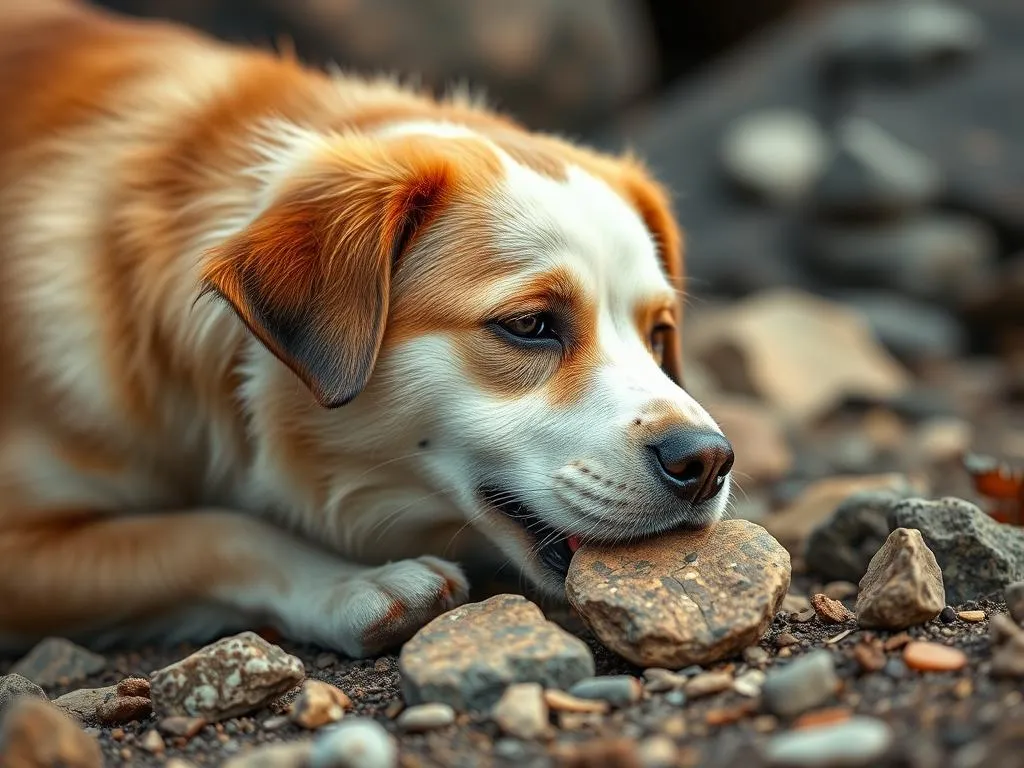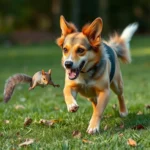
Introduction
Understanding dog behavior is essential for any pet owner. It not only helps in nurturing a strong bond between you and your canine companion but also plays a significant role in ensuring your dog’s overall health and well-being. One of the more puzzling and concerning behaviors some dogs exhibit is eating rocks. This seemingly bizarre behavior raises questions about why dogs are drawn to non-food items and what it signifies about their health or mental state.
In this article, we will explore the reasons behind this behavior, the potential health risks associated with it, and how to manage and correct the issue. By the end, you’ll have a comprehensive understanding of why your dog might be eating rocks and how to address this behavior effectively.
Understanding Dog Behavior
The Basics of Canine Behavior
Dogs are instinctual animals, and their behaviors are deeply rooted in their evolutionary history. Some behaviors stem from their wild ancestors, while others are shaped by breeding, environmental factors, and training. For instance, certain breeds may have a stronger prey drive, leading them to chew on rocks or other unusual objects.
Additionally, a dog’s behavior is influenced by its environment. A dog raised in a stimulating setting with plenty of toys and activities is less likely to engage in destructive behaviors like eating rocks. Conversely, dogs that lack mental and physical stimulation may find themselves seeking entertainment in less appropriate ways.
The Role of Play and Exploration
Play is a fundamental aspect of a dog’s life, serving as a critical avenue for learning and socialization. Dogs are naturally curious creatures, and exploration allows them to engage with their surroundings. However, this curiosity can sometimes lead to behaviors that concern dog owners, such as chewing on rocks.
Understanding the balance between play, exploration, and the potential for harmful behaviors is crucial for dog owners. Recognizing that dogs are constantly learning and adapting can help you create an enriching environment that minimizes undesirable behaviors.
Reasons Why Dogs Eat Rocks
Natural Instincts
One reason why dogs eat rocks may stem from their natural instincts. Chewing is a behavior that is instinctual in many animals, including dogs. In the wild, chewing on various materials can help wear down teeth and keep them clean. Rocks may inadvertently become a target for this behavior, particularly if your dog is bored or lacks appropriate chew toys.
Nutritional Deficiencies
Another possible reason for this behavior is nutritional deficiencies. Dogs may seek out non-food items, including rocks, if they are lacking essential nutrients in their diet. Common deficiencies that might lead to this behavior include:
- Minerals: Lack of minerals like calcium or phosphorus can cause dogs to seek out alternative sources.
- Vitamins: A deficiency in vitamins can also lead dogs to munch on non-food items as they instinctively seek what their body craves.
If you suspect that your dog may have a nutritional deficiency, it’s essential to consult a veterinarian for a thorough evaluation and dietary recommendations.
Behavioral Issues
Behavioral problems can also lead to rock eating. Dogs that are bored or anxious may engage in destructive behaviors as a coping mechanism. This can manifest as chewing on rocks or other inappropriate items. Compulsive behaviors, which are repetitive actions that seem to serve no purpose, can also emerge in response to stress or anxiety.
Attention-seeking Behavior
Dogs are social animals, and they thrive on interaction with their owners. In some cases, a dog may start eating rocks to gain attention from their owners. If a dog learns that chewing on rocks results in reactions—whether positive or negative—they may continue the behavior as a way of seeking attention. Understanding the psychology behind this behavior can help owners address it effectively.
Health Risks Associated with Eating Rocks
Physical Injuries
One of the most concerning aspects of dogs eating rocks is the potential for physical injuries. Chewing on hard materials can lead to:
- Dental Damage: Rocks can chip or break a dog’s teeth, leading to pain and potential infections.
- Gastrointestinal Blockage: If a dog manages to swallow a rock, it can cause serious blockages in the digestive tract, which may require surgical intervention.
Poisoning Risks
Certain rocks or minerals may contain toxins that can be harmful to dogs. For instance, some types of stones may have chemicals that, when ingested, can lead to poisoning. It’s crucial for dog owners to be aware of the environment in which their pets are exploring to minimize these risks.
Long-term Health Issues
Chronic rock eating can lead to long-term health issues. Continuous dental problems can lead to infections and other systemic issues. Additionally, repeated gastrointestinal blockages can compromise a dog’s overall health and lead to more severe complications down the road.
How to Manage and Correct This Behavior
Consult a Veterinarian
If you notice your dog eating rocks frequently, the first step is to consult a veterinarian. A medical evaluation can help identify underlying health issues, including nutritional deficiencies or behavioral concerns. Your vet can provide valuable insights and recommend specific dietary changes or treatments.
Behavioral Training Techniques
Training your dog to discourage rock eating involves a combination of behavioral techniques. Here are some effective methods:
- Positive Reinforcement: Reward your dog when they choose appropriate chew toys instead of rocks. This helps reinforce the desired behavior.
- Redirection: If you catch your dog attempting to chew on a rock, redirect them to an appropriate toy or engage them in a game.
Providing Alternatives
Offering appropriate chew toys can go a long way in reducing the likelihood of your dog turning to rocks. Look for durable toys that satisfy your dog’s chewing needs. Options include rubber toys, dental chews, and interactive puzzle toys that provide mental stimulation.
Creating a Stimulating Environment
An enriching environment can help alleviate boredom and anxiety, which are common triggers for undesirable behaviors. Here are some tips for creating a stimulating environment:
- Regular Exercise: Ensure your dog receives daily physical activity tailored to their energy level.
- Interactive Play: Engage in interactive games like fetch or tug-of-war to keep your dog mentally and physically stimulated.
- Training Sessions: Incorporate regular training sessions to challenge your dog’s mind and strengthen your bond.
When to Seek Professional Help
Signs That Intervention is Needed
If your dog’s behavior escalates or becomes compulsive, it may be time to seek professional help. Signs that intervention is needed include:
- Frequent rock eating despite redirection
- Signs of distress or anxiety
- Damage to teeth or other health issues
Types of Professionals to Consider
Various professionals can assist in addressing your dog’s behavior:
- Veterinarians: For medical evaluations and dietary advice.
- Dog Trainers: To implement positive reinforcement techniques and behavioral training.
- Animal Behaviorists: For in-depth assessments and specialized training plans.
Conclusion
In conclusion, understanding why dogs eat rocks is essential for any dog owner concerned about their pet’s health and behavior. This behavior can stem from instinctual drives, nutritional deficiencies, behavioral issues, or a need for attention. The associated health risks make it crucial to address the behavior promptly.
By consulting with a veterinarian, implementing behavioral training techniques, and creating a stimulating environment, you can help your dog overcome this concerning habit. As a responsible pet owner, monitoring your dog’s behavior and seeking appropriate help when necessary can foster a healthy and happy canine environment.
Understanding your dog’s behavior will not only enhance your bond but also ensure that your furry friend remains safe and healthy.









